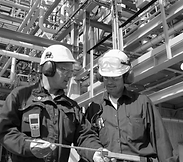Engineering and Technology Quarterly Reviews
ISSN 2622-9374




Published: 23 December 2020
Application of the BowTie Method in Accident Analysis: Case of Kaziwiziwi Coal Mine
Jabulani Matsimbe, Steven Ghambi, Abdul Samson
University of Malawi

Download Full-Text Pdf
10.5281/zenodo.4387214
Pages: 127-136
Keywords: Bowtie Method, Incident Investigation, Malawi Mining Industry
Abstract
A BowTie is a diagram illustrating proactive and reactive risk management at any working environment. This case study applied the bowtie method to provide a simple visual analysis of the hazards that caused fatal accidents at Kaziwiziwi coal mine on 2nd November 2012 and 15th November 2019. Two coal miners were killed on the spot and others injured due to failure of a bucket hoisting system and hanging rock fall. The authors demonstrated that the bowtie method is an effective visualization tool that can be used to analyze the hazard, top event, threats, consequences, barriers and escalation factors of mining accidents; and therefore give an overview of everything not wanted around a certain hazard. Mining companies in Malawi will apply this new knowledge to proactively conduct situational audits of unwanted scenarios, and identify barriers to prevent accidents from happening so far as is reasonably practicable. In addition, the Department of Mines will find this bowtie visualization tool useful when carrying out accident analyses in the future which in turn will promote safety awareness and policy development in the mining industry, and suggest ways on how to keep the normal but hazardous aspects from turning into something unwanted.
References
Annual Economic Report. (2012). Published report. Lilongwe: Malawi Government Publishing services.
Acfield, A.P. and Weaver, R.A. (2012), “Integrating Safety Management through the Bowtie Concept. A move away from the Safety Case focus”. Paper presented at the Proceedings of the Australian System Safety Conference-Volume 145.
Burgess-Limerick, R., Horberry, T. and Steiner, L. (2014), “Bow-tie analysis of a fatal underground coal mine collision”. Ergonomics Australia, 10(2), 1-5.
CGE. (2020), “Risk Management Solutions: creating bowtie diagrams”. Retrieved from https://www.cgerisk.com/products/bowtiexp
Dodshon, P. and Limerick, R. (2015), “Using Bow-Tie analyses to enhance incident investigation activities”. Proceedings 19th Triennial Congress of the IEA, Melbourne 9-14 August.
Face of Malawi. (2012), “One killed, another injured in an accident at Kaziwiziwi coal mine in Rumphi”. Retrieved from https://www.faceofmalawi.com on 6thJune 2020.
Maneya GJ. (2012). An Integrated Study of Coal Geology and Potential Environmental Impact Assessment at Mchenga Coal Mine in Livingstonia Coalfield in Malawi [unpublished Master of Science thesis on the Internet]. Pretoria: University of Fort Hare.
Malema, K. (2017), “The working conditions in the mining sector: the case of Mchenga and Kaziwiziwi coal mines in Malawi”. Open Science Journal 2(1).
Mining Safety Regulations. (1982), “Laws of Malawi-Mines and Minerals Cap. 61:01”. Government of Malawi.
Pitblado, R. and Weijand, P. (2014). Barrier diagram (Bow Tie) quality issues for operating managers. Process Safety Progress, 33(4), 355-361.
Safe Work Australia. (2012), “Guide for Major Hazard Facilities: Safety Case, Demonstrating the Adequacy of Safety Management and Control Measures”.ed underground coal mines in Malawi”. Hindawi Advances in Civil Engineering Volume 2019, Article ID 5350686.
Saud, Y.E., Israni, K.C. and Goddard, J. (2014), “Bowtie diagrams in downstream hazard identification and risk assessment”. Process Safety Progress, 33(1), 26-35.
Yasidu, U. (2019), “Influences of water vapor on Roof Fall accidents in selected underground coal mines in Malawi”. Hindawi Advances in Civil Engineering Volume 2019, Article ID 535



